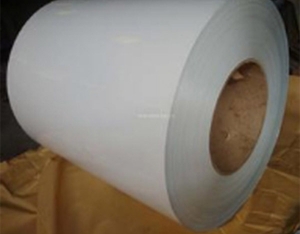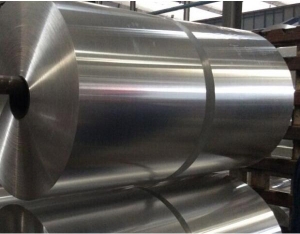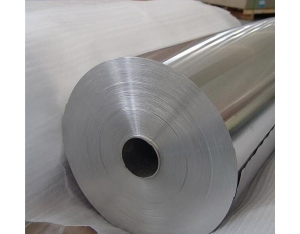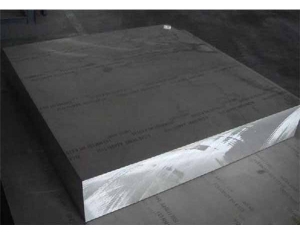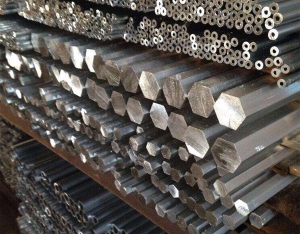Curtain wall aluminum plate
Release date:May 20th, 2019 Author: Click:
At present, there is a misconception in the design and construction of curtain walls in the industry. Whether it is aluminum or stone curtain walls, the gaps between the exposed surface units of the curtain wall are coated with weather resistant silicone sealant, and the tighter the better. If you don't apply glue, he says you cut corners. This concept has been formed in the minds of some homeowners and even many curtain wall technicians in China's curtain wall development to this day. Resulting in low quality standards and specifications, low product level, rough manufacturing by manufacturers, and outward deformation of installed aluminum curtain walls. Although there are also architects and consultants who require curtain walls to adopt a seam opening system, it is often difficult to implement or the implementation effect is not ideal due to the construction technology and cost of the construction manufacturer. Of course, some owners have found that after the seam opening, such as severe weather pollution in the north, there is a large amount of dust accumulation between the joints, and the design and construction of waterproof measures between the joints are not reasonable, resulting in serious leakage, which needs to be rectified later. So the seam opening system has never been truly applied on a large scale.
In developed countries such as Germany, the structural design of curtain wall products is very rigorous. After years of technical exploration and practical summary, curtain wall products are divided into two categories: one is the insulation and warm wall system, and the other is the decorative cold wall system. The following is a special introduction:
1. Thermal insulation wall system
As the name suggests, the main function of this type of wall is insulation, which is a wall that has a certain blocking effect on the heat exchange inside and outside the room. For example, the inner and outer sides are composed of aluminum or other metal plates, and the middle is made of insulation materials such as polyurethane, polystyrene, or rock wool; Another example is the use of concealed frame glass curtain walls, full glass curtain walls, and point connected glass curtain walls for the exterior enclosure structure of buildings. These walls are like poured concrete and brick walls, with only one shielding strip separating indoor and outdoor shielding. It is not allowed for indoor and outdoor air to convection on this shielding strip. Therefore, it is necessary to seal all gaps on the curtain wall that may cause air infiltration from a technical perspective and ensure permanent sealing within its service life.
2. Decorative cold wall system
This type of cold wall has two functions for buildings: one is to enhance the building effect, and the other is to prevent rainwater from eroding and corroding the building surface, thereby improving the durability of the building. In terms of materials, most of them are made of aluminum plates, stone, glass, and other materials, and most of them are used on the exterior surfaces of buildings that are not well lit and have structures; Structurally, it is required to maintain a certain distance from the building structure. The principle of equal pressure is adopted to prevent rainwater leakage, and air exchange channels are left between the plates to maintain dryness between the curtain wall and the building structure, making it easy for condensation water to be discharged. A relatively modern open hot channel curtain wall actually adds a decorative cold wall system outside the original insulation and heating wall curtain wall. If the decorative cold wall system is constructed as a thermal insulation warm wall, that is, all channels on the decorative cold wall are sealed with sealant, it will bring the following hidden dangers to the living room:
Regardless of whether the outer layer is made of aluminum or stone, a barrier layer will inevitably cause condensation due to temperature difference, and the connecting parts of the curtain wall will rust. Especially, due to the different potential difference between two different metal connecting parts, it will enhance electrochemical corrosion under the medium of condensation water, causing the curtain wall structure to relax and reduce its service life. Especially when the outer layer is coated with anti-corrosion paint on the back of an aluminum or stone board, the board itself is not breathable, and all gaps on the board are blocked. If the distance between the board and the wall is greater than 40mm, a chimney effect will be generated, which will accelerate the moisture transpiration of the foundation at the interval and increase the moisture concentration in the interval. At this time, if the moisture-proof layer of the insulation layer is not tightly sealed, it will cause the moisture content of the insulation material to saturate and lose its insulation effect.
Due to economic factors, some projects require a good exterior surface and cannot cost much money. There is no insulation layer or waterproof layer on the outer side of the civil structure, and the moisture in the interval between the curtain wall and the structural wall is very dense due to the aluminum plate or the stone surface layer coated with anti-corrosion agent, which cannot evaporate outdoors and can only penetrate indoors through concrete or brick walls. After high-end decoration, the walls of residential buildings are generally equipped with a layer of plywood on the indoor side, which prevents the moisture from evaporating. Especially in kitchens with high humidity and warehouses that do not frequently open doors, when the sun rises after the beginning of the Spring Festival, it will produce mold that is difficult to enter the nose, seriously damaging the sanitary environment of the room. A large amount of dewy water deposits on the surface of the first floor foundation and seeps into the wall, which can reduce the thermal resistance of the wall, premature pulverization of the wall foundation, and reduce its service life.
The aluminum panel curtain walls currently used in buildings in China are mostly designed to enhance the architectural effect, and are reasonably matched with glass to display a modern architectural style artistic effect that is elegant, upright, or solemn and magnificent. These aluminum panel curtain wall products are classified as decorative cold wall systems in terms of structural design and construction. But what about the aluminum curtain walls of our buildings now? More than 90% of the product structure design and installation process are insulation and warm wall systems. From a close view, the weather resistant sealant applied between the gaps of the panels is uneven, uneven, and the surface is not smooth. In addition, the silicone oil of the sealant precipitates and adsorbs more dust, making the surface of the curtain wall dirty and unsightly. At least 30% of the aluminum curtain wall panels in the north are deformed outward, especially those sprayed with metal fluorocarbon paint. If the panel surface is slightly uneven, there will be a significant contrast. From a distance, the overall surface of the aluminum curtain wall is like a gentle breeze and rippling lake water, which is very unsightly and seriously affects the style of the building.
Under the current situation in our country, it is very difficult to immediately prohibit the application of aluminum panels and stone curtain walls with insulation and heating wall systems to decorative parts of buildings with structural walls. The main reasons for this are the misleading national industry standard "JGJ133-2001 Technical Specification for Metal and Stone Curtain Wall Engineering", low price competition in the market, extremely unreasonable construction schedule, and other factors. In the JGJ133 standard, it is not clear what insulation and heating walls and decorative cold walls are. Another reason is that the product structure of dry sealed aluminum panels and stone cold wall systems is significantly different from the current insulation and warm curtain wall products. It is not necessary to remove the sealing and weather resistant adhesive of existing aluminum panels and stone curtain walls and turn them into decorative cold walls. This requires a process of improving technical understanding. I think we should be able to solve this problem when formulating product standards for aluminum and stone curtain walls, as well as when compiling standard atlases for these two products. However, the outward deformation of aluminum curtain walls has a significant impact on the image of newly built buildings, and the extremely low curtain wall technology is difficult to align with international advanced technology, requiring immediate rectification.
3. The deformation of aluminum curtain wall panels is mainly caused by the following factors
1. The plate has no edge ribs or middle ribs, causing deformation under wind pressure and air expansion.
This deformation phenomenon often occurs on curtain walls using aluminum plastic composite panels as panels. Building owners choose informal manufacturers to save money. In order to achieve higher profits, manufacturers do not use any side ribs or middle ribs. Fold the aluminum plastic plate into a box shape, screw it directly onto the frame, and apply glue to the gaps between the plates to complete the work. In this way, the strength of the curtain wall panels is simply not enough, and the panels undergo fatigue deflection deformation from inside out under positive and negative wind pressures, resulting in an increase in panel size. The curtain wall with a prominent sunny side reflects that due to the construction process using insulation and warm walls, all the gaps between the panels are tightly sealed with glue. The air between the panel and the structural wall heats up under the sunlight effect, causing the panels to deform and deform outward under the action of air expansion.
2. The plate and curtain wall structure frame are fixed, and thermal stress cannot be released to cause deformation.
Aluminum curtain walls are used in areas with large seasonal temperature differences, especially in the early spring and late autumn when the temperature is relatively low. At this time, the thermal effect of sunlight is strong, especially for aluminum panels with darker colors, which have a higher temperature rise. At different temperatures, the thermal expansion value per meter of length of aluminum panels is larger. The curtain wall frame is inside, and the influence of sunlight is weaker. When the aluminum panel and frame * are large, a temperature difference of over 80 ℃ can occur. When the aluminum panel size is large, a large linear expansion difference will occur. If the curtain wall plate structure adopts a folded edge and the aluminum plate is fixed to the frame with screws, it will cause the thermal stress on the aluminum plate surface to be unable to be released, forcing the plate surface to yield and causing deformation outward under the action of air. This deformation phenomenon is quite significant, especially when the curtain wall frame inside the aluminum plate is made of steel profiles. As the thermal expansion coefficient of aluminum is generally twice that of steel, the deflection generated by the same size plate will be twice the value in the table. Some manufacturers process the screw holes of the fixed plate into long holes along the length or width direction on the corner codes of the fixed plate, but deformation still occurs after the plate is installed, and this connection method cannot meet the requirements for deformation in the plane of the curtain wall.
3. Stress and deformation occur during the assembly of panels and edge ribs
Some manufacturers add a circle of edge ribs around the unit plate to solve the thermal stress deformation of the aluminum plate surface, especially when the panel is made of aluminum plastic composite plate. In terms of production technology, the panel is grooved and folded into a box shape according to the size of the plate folding on the grooving machine. The other line is to cut and assemble edge rib profiles into edge rib frames according to the required size of the plate. Then install the edge rib frame into the box shaped panel and fix the two bodies with pop rivets. At the work site, it is often found that there is deviation in the panel groove and edge folding, and there is deviation in the assembly of edge rib profiles into frames. When the two bodies are matched, either the frame is small or the plate folding size is too large. In order to ensure the construction period and avoid material costs, forced assembly is often carried out, resulting in assembly stress on the board surface, whether it is edge rib deformation or compression deformation of the board surface. This type of plate undergoes outward deformation under the influence of temperature and air expansion force.
4. Rectification Measures for Deformation of Aluminum Plate Curtain Wall
The basic principle of curtain wall product design should be that, in addition to ensuring strength, both structural frames and finishes should be designed with embedded structures, and thermal stress should never be allowed. If thermal stress is generated, it will cause deformation and failure of the component. To avoid generating thermal stress, certain gaps must be left in each mating part, and designers must have the appropriate structure or sealing material to ensure the airtightness and water tightness of the product. This is the key to the success of curtain wall design.
1. The aluminum curtain wall panels and frames must be floating connected
Since China's reform and opening up, there have been rapid changes in various aspects, especially in the construction industry, which has undergone vigorous and vigorous development. New buildings are constantly springing up in various regions, and they are getting taller and taller. To meet the structural requirements of curtain walls used in high-rise buildings, firstly, thermal stress should not be generated, and secondly, the deformation of curtain walls in the plane caused by natural vibration and increased amplitude under wind load should be met. In addition, in seismic design, the displacement control value calculated according to the elasticity of different building structural types should be designed according to three times. For example, in earthquake fortification areas, there is a frame structure super high-rise building with a height of 3.4m between floors, and the displacement of the curtain wall must meet the requirement of 25.5mm. This requires that the curtain wall panels must be floating connected to the structural framework while meeting the strength requirements. These two figures are only a form of panel connection, and multiple structures can be designed during product design. However, regardless of the form of structure used, the design principle is that the plate connected structure must be able to absorb the thermal stress caused by temperature differences in the material and the in-plane deformation requirements caused by earthquakes.
2. Aluminum curtain wall panels eliminate assembly stress
If the plates of the aluminum curtain wall are not ribbed and welded, riveted, or directly stamped to form corner codes on the plate, the fixing screw holes of the corner codes have long holes, which cannot solve the deformation problem caused by thermal stress. A project uses a large number of plates, and some of the plate sizes have significant differences. The large thermal expansion of the plate varies due to the length and width of the plate, not along the direction of the plate's length and width, It is not possible to use a computer to calculate the possible expansion direction of each corner code on the periphery of each board used in engineering based on the position of the corner code on the board, and to open a diagonal hole for each corner code in this direction. Another factor is that the screws that fix the plate must be tightened. In the absence of edge ribs, the strength of the folded edge of the aluminum plate is very weak, making it difficult to transmit thermal stress to the corner code, allowing the corner code to creep and absorb thermal expansion according to the temperature difference. Therefore, this method of opening long holes on the corner code cannot solve the problem of aluminum plate deformation.
To ensure that the aluminum plate does not deform, the plate and frame structure must be connected in a floating manner. To transfer thermal stress to the folded edge of the plate, it is necessary to add edge ribs at the folded edge of the plate for reinforcement, which is to use 3mm thick single aluminum plates in areas with large seasonal temperature differences. To ensure that the folded aluminum plate does not generate or assemble stress, and to ensure the production quality of the aluminum plate, the edge rib frame should be designed as a length width expandable structure. In terms of tolerance and fit terminology, the size of the plate folded into a box shape is the reference hole, and the folding plate is matched by the expansion and contraction of the edge rib frame. The four corners of the edge rib frame are connected by connectors. Leave a 2mm gap between the horizontal and vertical bars of the edge rib frame and the connector at both ends, and adjust the length and width of the frame to 4mm. This 4mm is sufficient to absorb the machining deviation between the plate folding and frame assembly, and can eliminate the phenomenon of improper matching in Figure 5 that affects the quality. This retractable edge rib frame not only strengthens the thermal stress conduction, but also absorbs the thermal stress deformation caused by the small temperature difference between the edge ribs inside the panel, thereby eliminating the deformation of the aluminum plate and ensuring the flatness of the overall aluminum plate curtain wall.
3. The reinforcing ribs of the aluminum curtain wall panels should be floating connections
There are approximately three ways to connect the reinforcing ribs of the aluminum curtain wall panel to the panel: structural adhesive bonding, super strong adhesive tape bonding, and fixed by welding screws. The common feature is that the ribs are fixed tightly to the panel, and most of the ends of the ribs are fixed to the edge rib frame. The panel is directly exposed to sunlight, and the reinforcing ribs are inside the panel, especially after being isolated by a layer of adhesive. Due to the temperature difference between the panel and the panel, thermal stress occurs, which limits the expansion of the panel along the axial direction of the reinforcing ribs. If both ends of the reinforcing rib are fixed to the frame rib, it limits the expansion of the panel along the radial direction of the reinforcing rib, which can easily cause shear damage to the adhesive and connectors and reduce their durability.
Reinforcement ribs and plates for aluminum curtain wall panels; The connection and installation sequence is to first fix the corner codes at both ends of the reinforcing rib to the edge rib frame with pop rivets or self working screws, then clip the reinforcing rib into the fixed corner code from top to bottom, and then use high-strength adhesive to stick a pressure plate along one-third of the length of the reinforcing rib to press it down. Attention should be paid to leaving a 2mm gap between the upper part of the reinforcing rib and the pressure plate, and a 2mm gap must also be left between the end of the reinforcing rib and the corner code. This floating connection structure will not generate thermal stress between the panel and the middle rib, which not only achieves the reinforcing effect but also ensures the flatness of the panel.
Design of Reinforcement Ribs
Appearance requirements: conducive to the downward rolling of condensation water, achieving a large inertia moment along the y-axis
Stiffness calculation: The single span mid rib is calculated as a simply supported beam under trapezoidal load under positive wind pressure, and as a simply supported beam under three uniformly distributed concentrated forces under negative wind pressure. Its deflection should not be greater than 1/300 of the mid rib span.
Design of pressure plate
Appearance requirements: conducive to the downward rolling of condensation water, with sufficient stiffness
Adhesive: Domestic NJ-1 series high-strength adhesive
Its performance: tensile strength 34N/mm2 (metal to metal bonding). The shear strength is 36N/mm2 (metal to metal bonding). The curing temperature is below 20 ℃ for 15 to 50 minutes, above 20 ℃ for 1 to 20 minutes, and 2-3 hours to reach * high strength.
This article's website:/news/412.html
Keywords:Aluminum plate manufacturer,Curtain wall aluminum plate manufacturer,Curtain Wall Aluminum Plate Price
Next article:The difference between 1060-O state and 1060-H24 state
Recent Views:
- Aluminum coil manufacturers explain the advantages and disadvantages of 3-series aluminum coil aluminum plates
- 5 Advantages of Corrugated Aluminum Plate
- Control of Alloy Content in Alloy Aluminum Plate
- Aluminum coil manufacturers take you to understand coated aluminum coils
- What application scenarios are patterned aluminum plates suitable for?
Related products:
Related news:
- Differences between alloy aluminum plates 6061 and 6063
- Application and classification of 1060 patterned aluminum plate
- What application scenarios are patterned aluminum plates suitable for?
- The main uses of aluminum sheets and coils in daily life
- Control of Alloy Content in Alloy Aluminum Plate
- 3003 aluminum plate anti rust aluminum plate
- 5 Advantages of Corrugated Aluminum Plate
- Aluminum plate manufacturers take you to learn about anodized aluminum plates
- Patterned embossed aluminum plate, anti slip aluminum plate
- Characteristics and advantages of aluminum sheet and aluminum veneer


